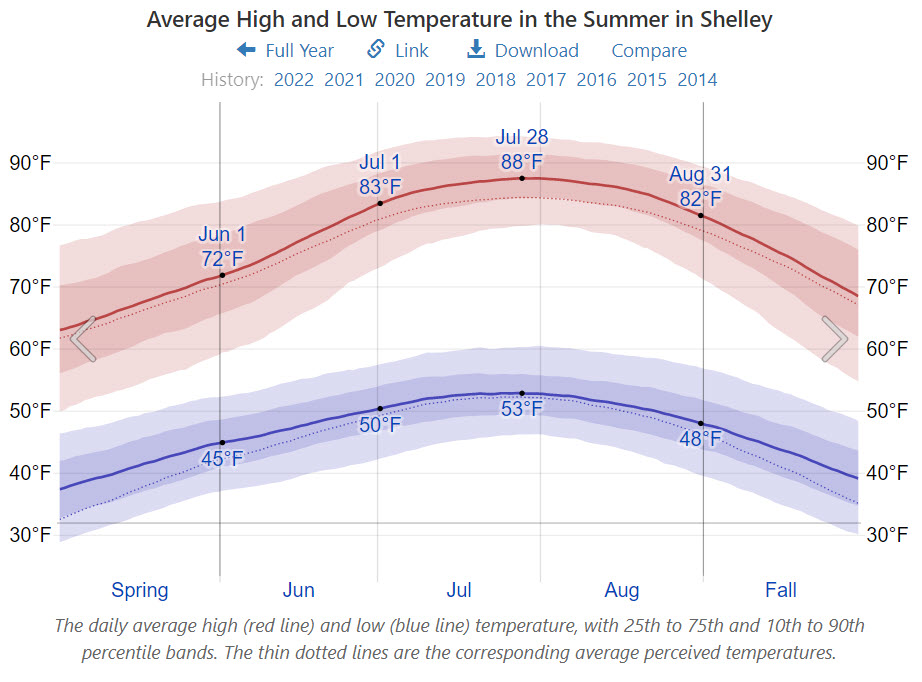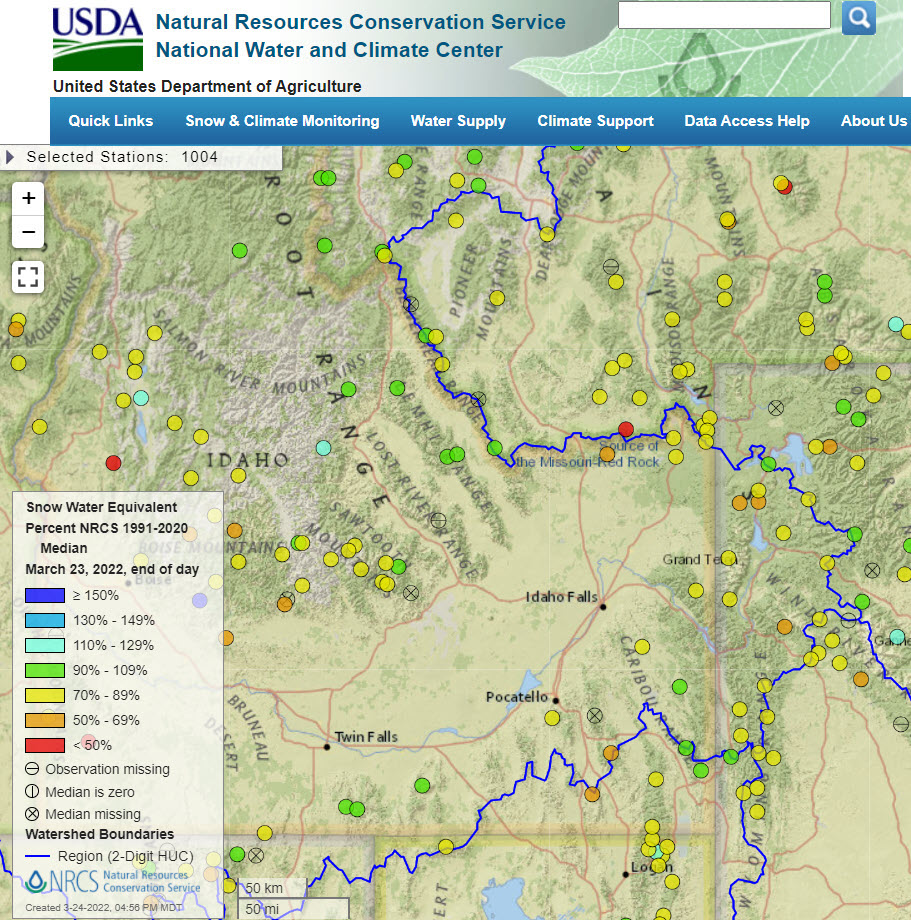Farmers facing water shortage due to low snowpack
SHELLEY – Last year’s hot summer and last winter’s snowpack has local water districts and farmers looking for water conservation to make it through the 2022 growing season.
Last summer, Shelley’s average daytime high temperature was 83 degrees compared to the historical average of 72 degrees, according to weatherspark.com.

“The warmer temperature for an extended time required farm irrigators to use more storage water from the local reservoirs,” Bureau of Reclamation Hydrologist Jeremy Dolling said. “This has brought the Upper Snake River teacup to 54 percent today.”
The Upper Snake River reservoir system holds 4,045,695 acre-feet of water. It consists of Lake Walcott, American Falls, Palisades, Jackson Lake, Ririe, Grassy Lake, and Island Park Reservoirs.
“Based on current snowpack levels between 70 and 80 percent, the reservoirs will only fill between 70 and 75 percent this summer,” Dolling said. “We would need 120 percent of normal snowpack to fill the reservoirs this year.”
“The winter snowpack was tracking well until January. Then, an extended cold spell fell over the region, and precipitation levels dropped off dramatically. Most of our reporting stations indicate between 73 and 80 percent of normal,” Natural Resources Conservation Service Hydrologist Erin Whorton said. “Our main gage at Heise indicates streamflow at 83 percent of normal.”
All of this data translates into insufficient water for irrigators this summer.
Canal companies distribute most of the reservoir storage water in the Upper Snake River plain. Each company is allotted so much water. This water usually lies in the upper level of the reservoir and is the first to be used up during the irrigation season.
Irrigation Districts are different from canal companies. Their water runs with the land and is not separate. Irrigation Districts typically have storage water toward the lower level of the reservoir.

“What is crazy, we have been through droughts before, but we have never been totally out [of water] in the Idaho Irrigation or the Snake River Valley Irrigation Districts,” local farmer and Idaho Irrigation District board member Merrill Hanny said. “We haven’t given out any notices yet. But, if we don’t get any timely spring rains, we will have to devise a program to treat everyone fairly, but we will have to use less water. Patrons may have to decide if they want to water one crop or another. They might be cut to 75 percent of what they are accustomed to. There will be some sacrifices. They will have to decide what is their best option.”
The Snake River Valley Irrigation District sent a notice to its customers, stating, “Due to the below-average snowpack and low reservoir levels, patrons in the district will be on a 14-day rotation with flood-irrigators permitted to two hours of run time per acre.”
“We have a board meeting on the 12th of April, in which we will discuss further the most current and vital statistics and forecast for the upcoming irrigation season,” SRVID board member Gary Dial said. “This is a public meeting where people can attend.”
SRVID office is at 816 North 700 East, in Basalt, Idaho.





